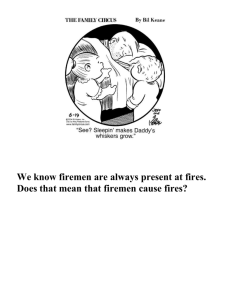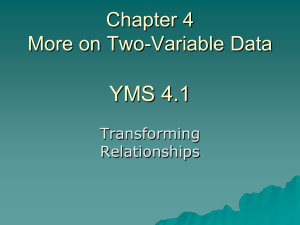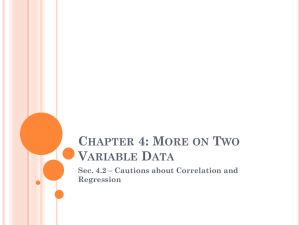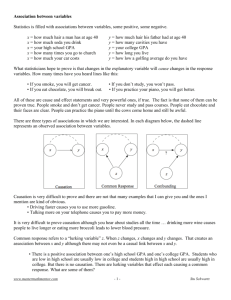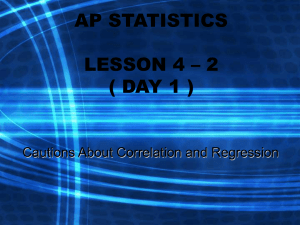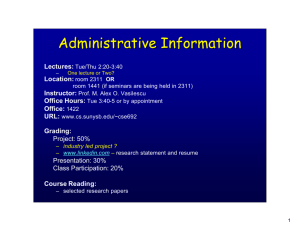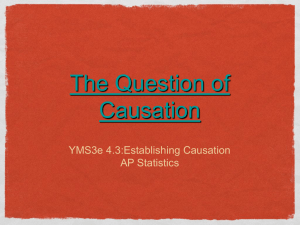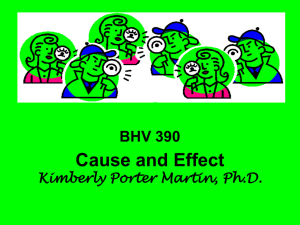MATH 2560 C F03 Elementary Statistics I LECTURE 11: The
advertisement
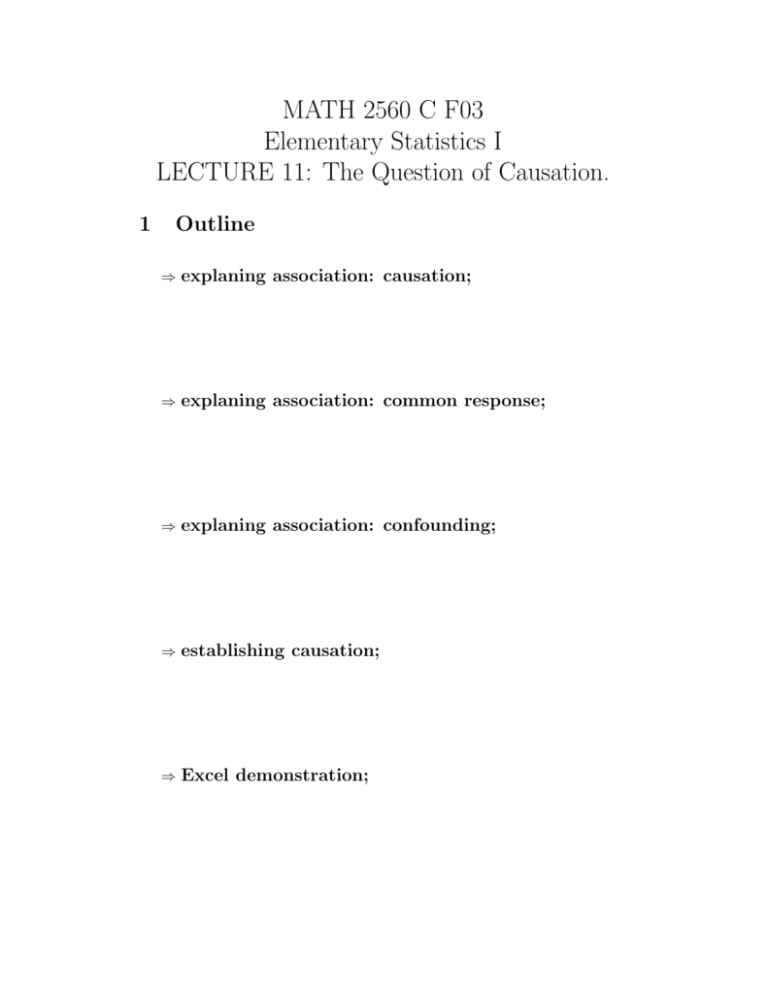
MATH 2560 C F03 Elementary Statistics I LECTURE 11: The Question of Causation. 1 Outline ⇒ explaning association: causation; ⇒ explaning association: common response; ⇒ explaning association: confounding; ⇒ establishing causation; ⇒ Excel demonstration; 2 Introduction =⇒ The goal in many studies of the relationship between two variables is to establish that changes in the explanatory variable cause changes in the response variable. =⇒ The main questions: 1) What ties between two variables can explain an observed association? 2) What constitutes good evidence for causation? Examples. Observed Association Between x and y 1. x = mother’s body mass index ⇒ y = daughter’s body mass index; 2. x = amount of the artificial sweetener saccharin in a rat’s diet ⇒ y = count of tumors in the rat’s bladder; 3. x = student’s SAT score as a high school senior ⇒ y = the student’s first-year college grade point average; 4. x = monthly flow of money into stock mutual funds ⇒ y = monthly rate of return for the stock market; 5. x = whether a person regularly attends religious services ⇒ y = how long the person lives; 6. x = the number of years of education a worker has ⇒ y = the worker’s income. 3 Explaning Association: Causation Figure 2.29 show in outline from how a variety of underlying links between variables can explain association: ⇒ dashed double-arrow line: an observed association between the variables x and y; ⇒ solid arrow (first diagram (a)): shows ”x causes y”; ⇒ solid arrows (second diagram (b)): common response to changes in lurking variable z; ⇒ third diagram (c)): confounding. Examples of direct causation: Item 1 and 2 in Example 2.23 are examples of direct causation. However: 1) even when direct causation is present, it is rarely a complete explanation of an association between two variables; 2) even well-established causal relations may not generalize to other settings. 4 Explaning Association: Common Response =⇒ Common response is illustrated in the second diagram in Figure 2.29. Both x and y change in response to changes in lurking variable z. Examples of common response: The third and fourth items in Examples 2.23 illustrate how common response can create an association. 5 Explaning Association: Confounding The third diagram in Figure 2.29 illustrates confounding: =⇒ both the explanatory variable x and the lurking variable z may influence the response variable y. Confounding Two variables are confounded when their effects on a response variable cannot be distinguished from each other. The confounded variables may be either explanatory variables or lurking variables. Examples of confounding: the last two associations in Example 2.23 (items 5 and 6) are explained in part by confounding. The most important lesson of these examples: even a very strong association between two variables is not by itself good evidence that there is a cause-and-effect link between the variables. 6 Establishing Causation =⇒ The main question of establishing causation: How can a direct causal link between x and y be established? =⇒ The best method of establishing causation: conduct a carefully designed experiment in which the effects of possible lurking variables are controlled. =⇒ What are the criteria for establishing causation when we cannot do an expewriment? Criteria The association is strong; The association is consistent; Higher doses are associated with strong responses; The alleged cause precedes the effect in time; The alleged cause is plausable. 7 Summary 1. Some observed associations between two variables are due to a causeand-effect relationship between these variables, but others are explained by lurking variables. 2. The effect of lurking variables can operate through common response if changes in both the explanatory and response variables are caused by changes in lurking variables. Confounding of two variables (either explanatory or lurking variables) means that we cannot distinguish their effects on the response variable. That an association is due to causation is best established by an experiment that changes the explanatory variable while controlling other influence on the response. 3. In the absence of experimental evidence, be cautious in accepting claims of causation. Good evidence of causation requires a strong association that appears consistently in many studies, a clear explanation for the alleged causal link, and careful examination of possible lurking variables.

